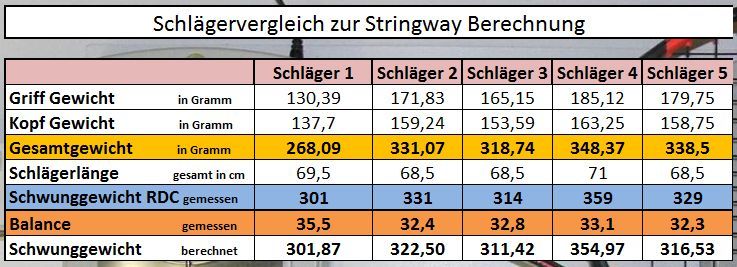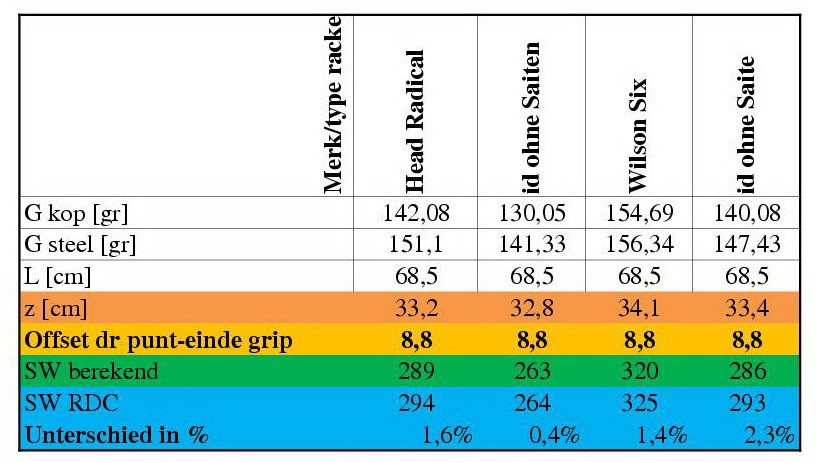Irvin
Talk Tennis Guru
If that were true SW machines would not work because machines like the RDC, PTC, Head SW machine, Alpha Accuswing, etc do not measure distance only the period.The square of the distances is used in the calculation of the Swingweight.
The measurement error is therefore also taken in the square.
Unless you are pivoting a racket 10 cm from the butt you must first determine the inertia around the pivot point. That is determined by the period. From that point you must calculate the inertia at the center of mass and then you can calculate the SW. The fewer calculations that must be preformed the more accurate you results will be.head, i though the balance point would be different for when the swing location is different, as the object "may" swing different.... hence the quick/experimental measurement. that was no way VERY accurate to achieve a desired outcome....
if you would like to try an experiment measure the SW from the top 5 strings on a tennis racket. I’d wager none of the results will be the same. How do you know which if any are accurate?



